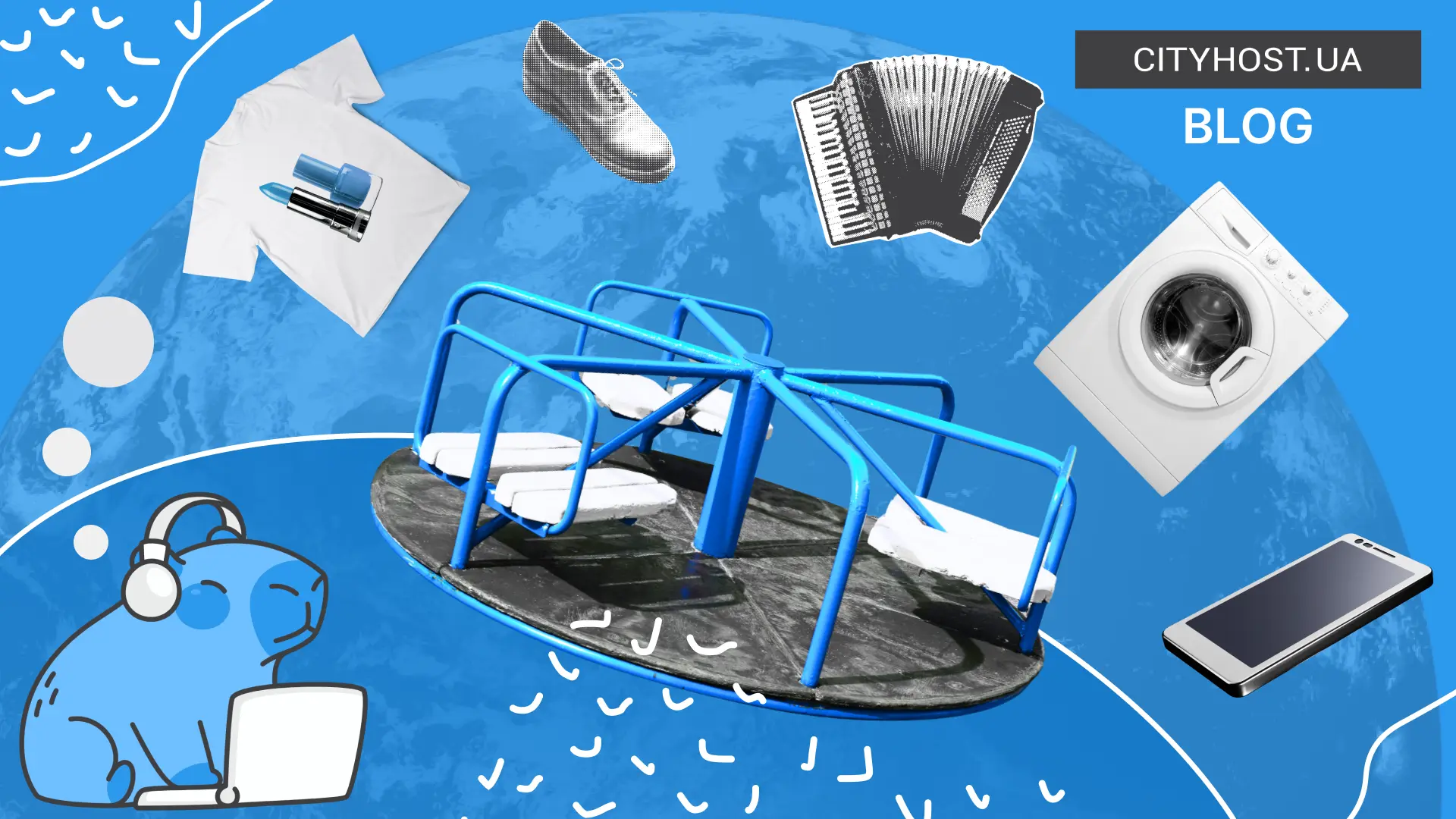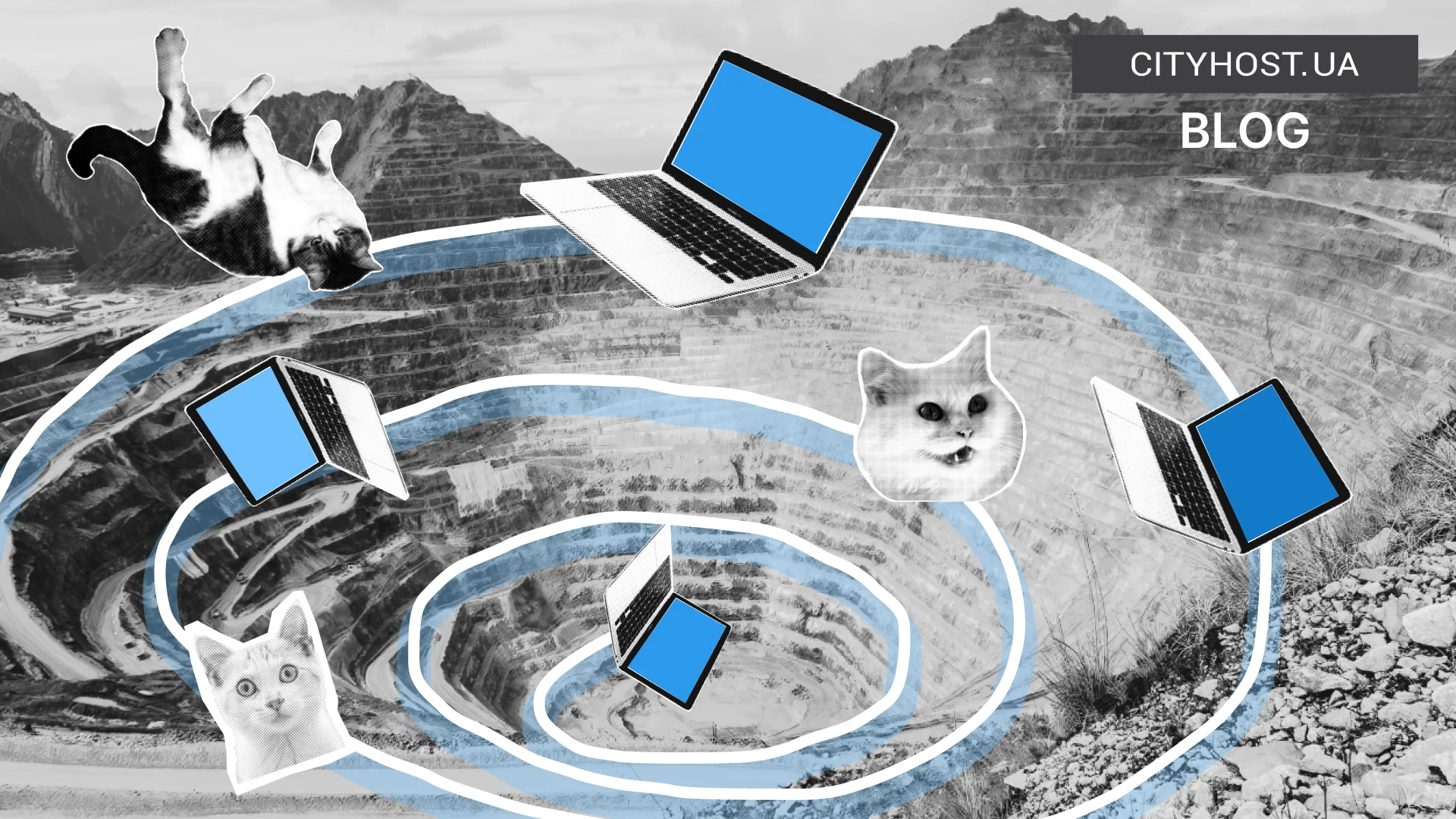
- What Is Happening to Websites: Our Experience and International Cases
- What Caused the Traffic Drop-Off: A Timeline of Events
- Why My Website Fell into a Traffic Drop-Off
- How to Recover from a Traffic Drop-Off: Actionable Steps to Restore Your Website
- What Happens to Websites After a Traffic Drop-Off
Imagine this: your 10-year-old website with thousands of high-quality articles suddenly loses up to 90% of its organic traffic. The reason isn’t seasonality or technical errors but a traffic drop-off — a prolonged decline in website visits after Google’s global algorithm updates in 2023–2025, as well as the introduction of AI Overview and AI Mode. Even authoritative platforms like HubSpot and Forbes report a 34% decrease in CTR. These global changes have also affected our website, Cityhost. However, we have already begun applying methods to adapt to the changing role of content on the internet and are ready to share them with you.
What Is Happening to Websites: Our Experience and International Cases
In 2023–2025, website owners faced a decline in impressions and clicks in Google search results, as well as a rapid traffic drop of 50–90%. The key reason was the development of artificial intelligence: AI systems started covering an even wider range of queries with AI-generated answers, improvements in ChatGPT, Grok, Claude and other AI assistants, and the rollout of AI Mode in more countries, including Ukraine. Google tried to improve search quality, but in doing so delivered painful blows to webmasters by releasing a series of major updates. As a result, both large, established platforms and new niche websites — high-authority quality projects and low-value “trash” sites alike — found themselves in a traffic drop-off, unable to recover.
Cityhost also fell into a traffic drop-off, despite publishing valuable materials such as personal experiences, client case studies, and in-depth research. We especially noticed painful changes after September 10, 2025.
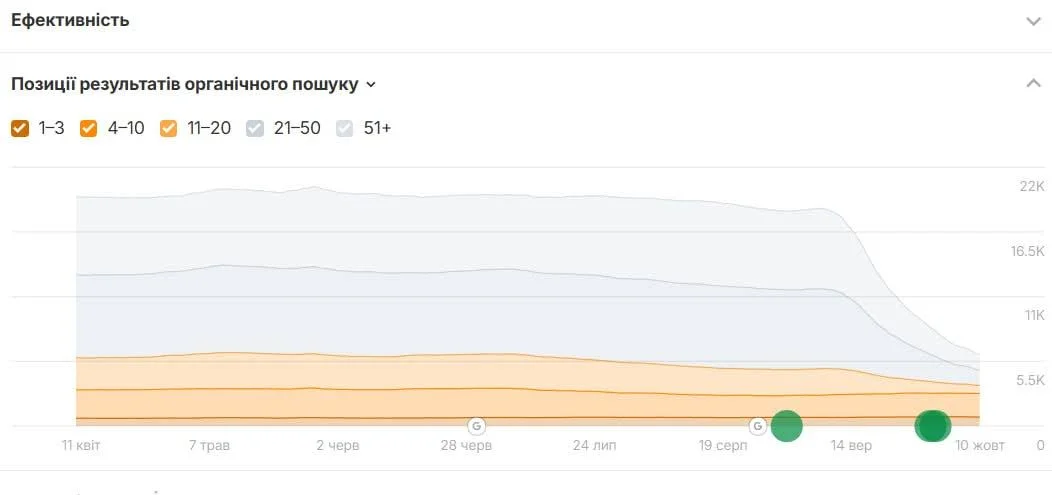
We began analysing our web project, because there are always areas that can be improved to provide more value to visitors and meet updated search engine algorithms. At the same time, we searched for information to see whether other website owners were facing the same issue.
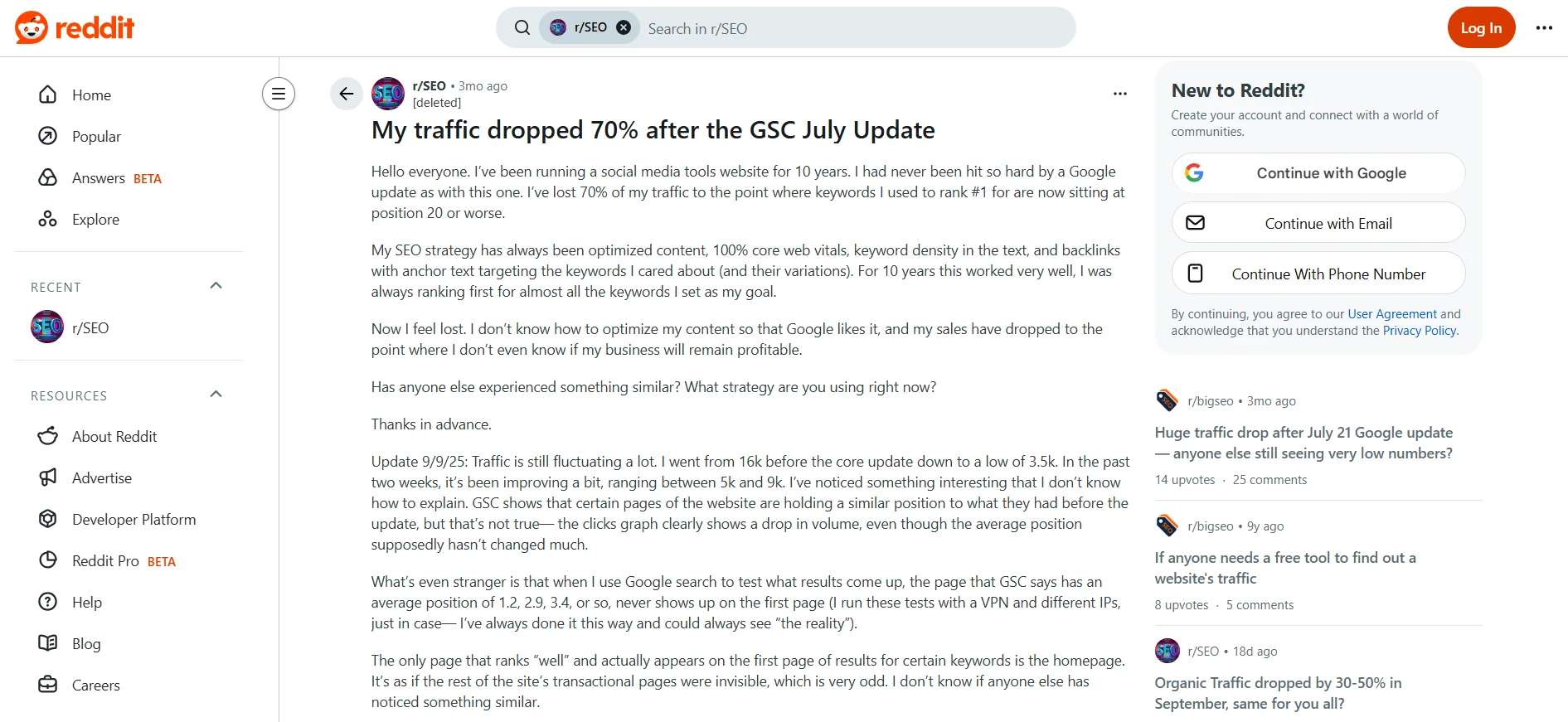
A Reddit user reported a 70% traffic loss: keywords that previously ranked #1 dropped to the 20th position or lower. Before Google’s August update, he had 16 000 impressions — afterward, only 3 500.
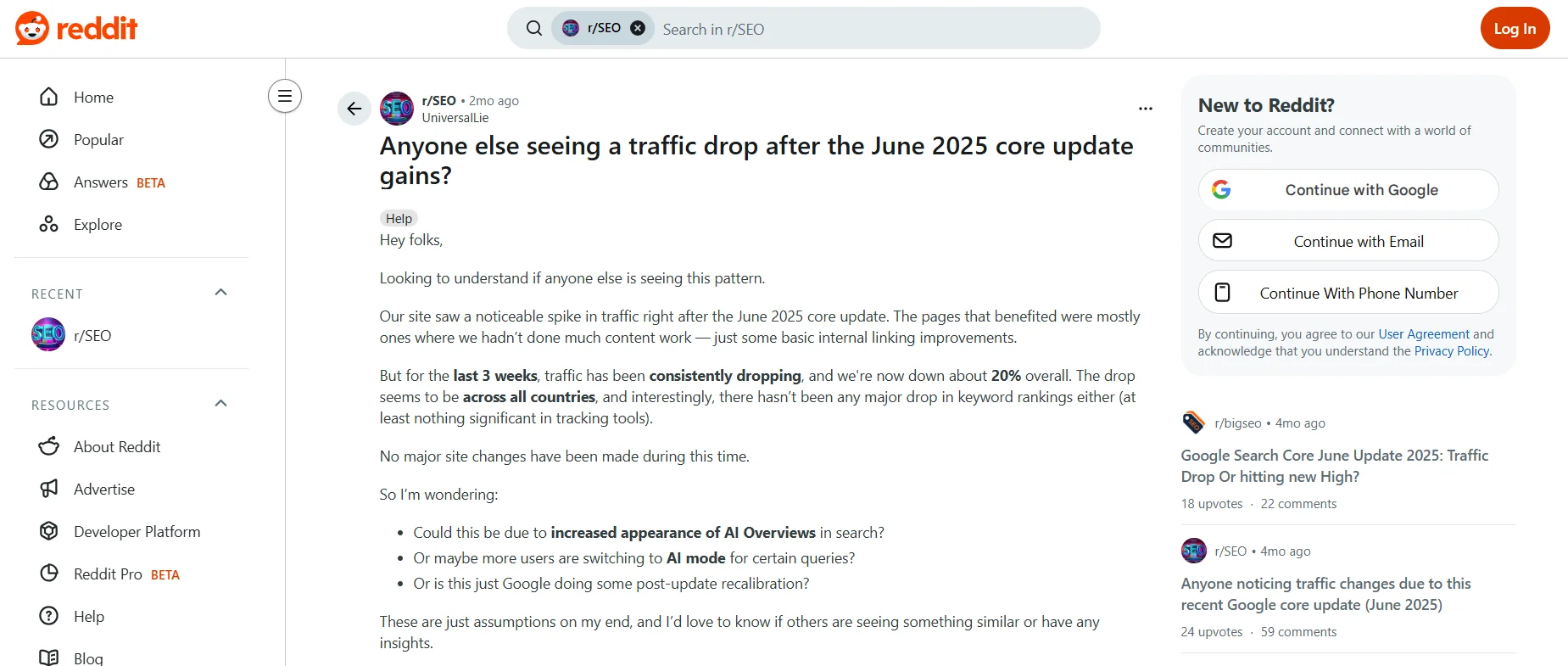
Another Reddit user noted that their site continues to decline after the June 2025 algorithm update. Interestingly, the traffic drop-off was not tied to any specific countries. It often happened without major ranking drops — pages stayed in the same positions for their keywords, but traffic still decreased.

Yet another Reddit post described a 30–50% traffic decline on client websites, and this was shared shortly after Google’s July update.
And there are thousands of similar posts across different forums. What’s even more notable is that not only small and medium-sized websites are affected by the traffic drop-off — large international platforms are struggling with the same issue.
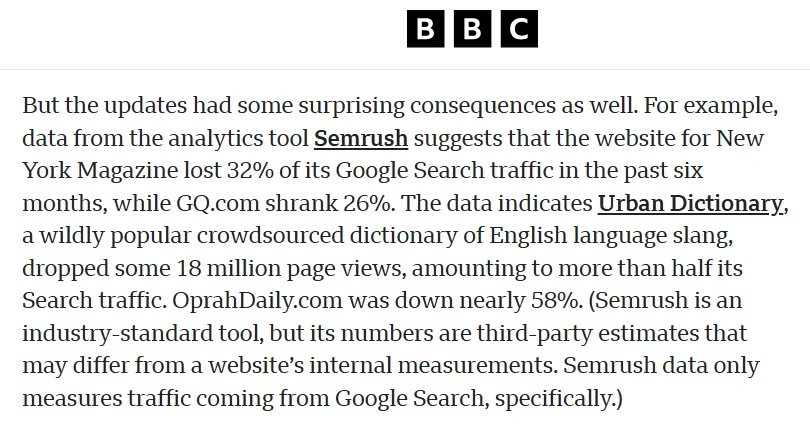
In 2024, the BBC published a report about traffic drops on websites such as New York Magazine, GQ, Urban Dictionary, and OprahDaily.
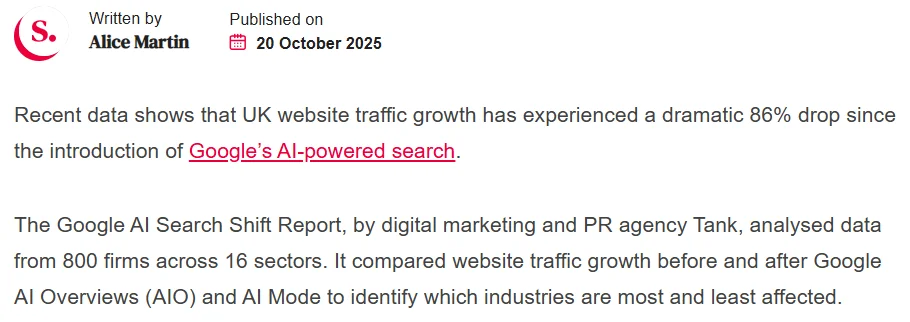
Recently, the platform Startups published a piece reviewing the Google AI Search Shift Report, which stated that traffic on a large number of websites fell by 86% after the launch of AI Mode.
What we’ve described is only a small part of all the online projects facing a traffic drop-off. Websites with great design, thousands of optimized pages, strong backlink profiles, and other crucial advantages that kept them in top search positions for decades are now experiencing declining traffic.
Read also: Talk of the Death of SEO Again: Is It Really Dead and How to Get Traffic Now
What Caused the Traffic Drop-Off: A Timeline of Events
The emergence of the traffic drop-off was caused by large-scale Google algorithm changes combined with the rapid development of artificial intelligence. Google’s algorithms have always evolved to combat purchased backlinks, over-optimized content, thin pages, and websites with technical issues. Yet until recently, there was at least a clear understanding of what had changed and what to do to regain top positions and the target audience. Today, even ranking in the top 1-3 positions does not guarantee visitors.
To better understand how the traffic drop-off appeared, let’s look at the timeline of key changes:
- August 18, 2022 — Launch of the Helpful Content Update. The algorithm begins distinguishing “people-first content” from “search-engine-first content”.
- May 2023 — Google announces Search Generative Experience (SGE). This is when AI-generated answers start appearing in search results alongside ads and website snippets.
- Throughout 2023 — A series of core updates, including the March, August, October, and November Updates, causing strong ranking volatility.
- March 2024 — The March 2024 Core Update introduces revolutionary changes: Helpful Content is integrated into the core algorithm, new anti-spam policies are added, and E-E-A-T is strengthened. From this moment, even 10% of weak pages can reduce the visibility of an entire website.
- May 2024 — Full rollout of AI Overviews, changing the core logic of search results. Previously, the model was “impressions → clicks”, but after AI Overviews, millions of users began receiving answers directly in the SERP. Website owners started facing zero-click searches: pages rank in top positions, but users don’t click through.
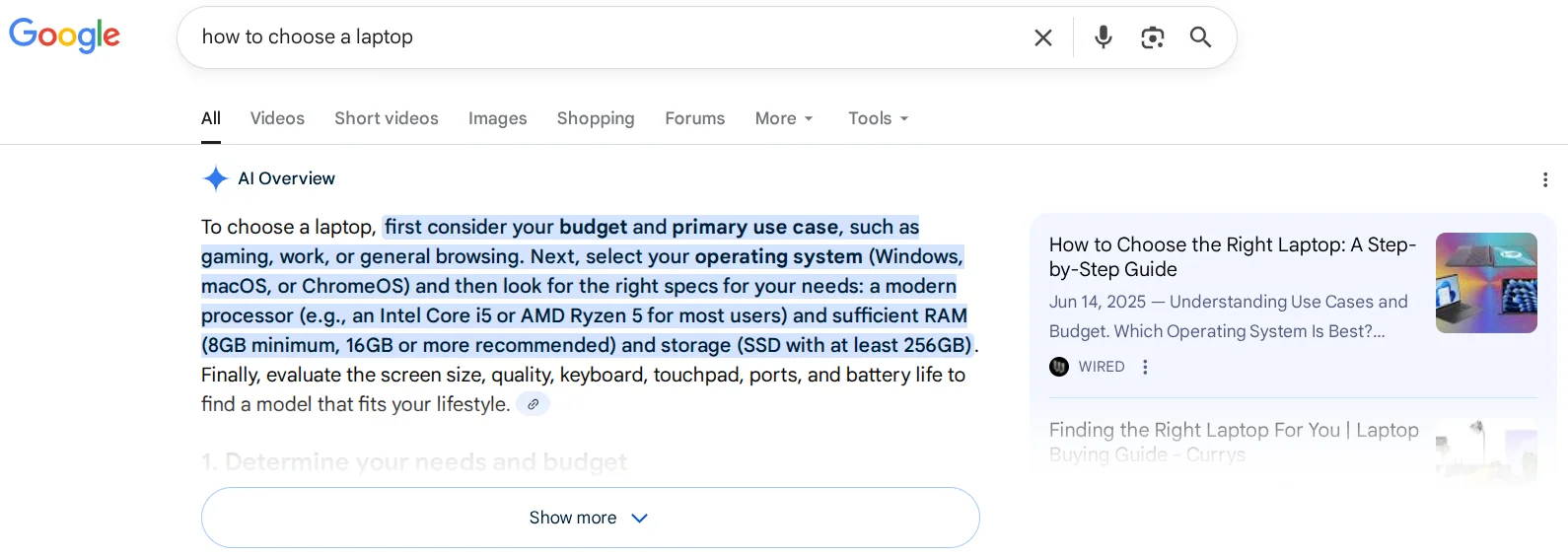
Example of a quick AI-generated answer in Google search results.
- March–June 2024 — More major spam and core updates aimed at combating mass/automated content generation, parasitic SEO, and low-quality backlinks.
- August 15, 2024 — August 2024 Core Update. Google intensifies its fight against overly “SEO-polished” content to show more useful materials. Website owners report indexing issues — pages not being indexed or updating very slowly. As a result, low-quality websites lose 50–80% of traffic, while even “good” projects lose 30–50% due to a reassessment of E-E-A-T.
- November 11, 2024 — November 2024 Core Update. Google takes measures that cause a 25–40% traffic drop on affiliate websites. It’s important to note this primarily affected sites built entirely around affiliate content — for example, copying course descriptions from Udemy (Skillshare, Coursera, etc.) with little or no changes.
- March 13, 2025 — Start of the March 2025 Core Update. A major update aimed at combating low-quality AI-generated content. Website owners reported 30–50% traffic losses.
- June 2025 — June 2025 Core Update. Google strengthens its fight against “weak pages” (AI content, thin content, lack of added value), leading to traffic drops of 40–70%. On top of that, AI-generated quick answers further reduce website traffic.
- August 2025 — August 2025 Spam Update + AI Mode. Google seeks to finally eliminate weak-content websites, causing traffic to drop by 50–90%. At the same time, AI Mode was launched in 180 countries, including Ukraine.
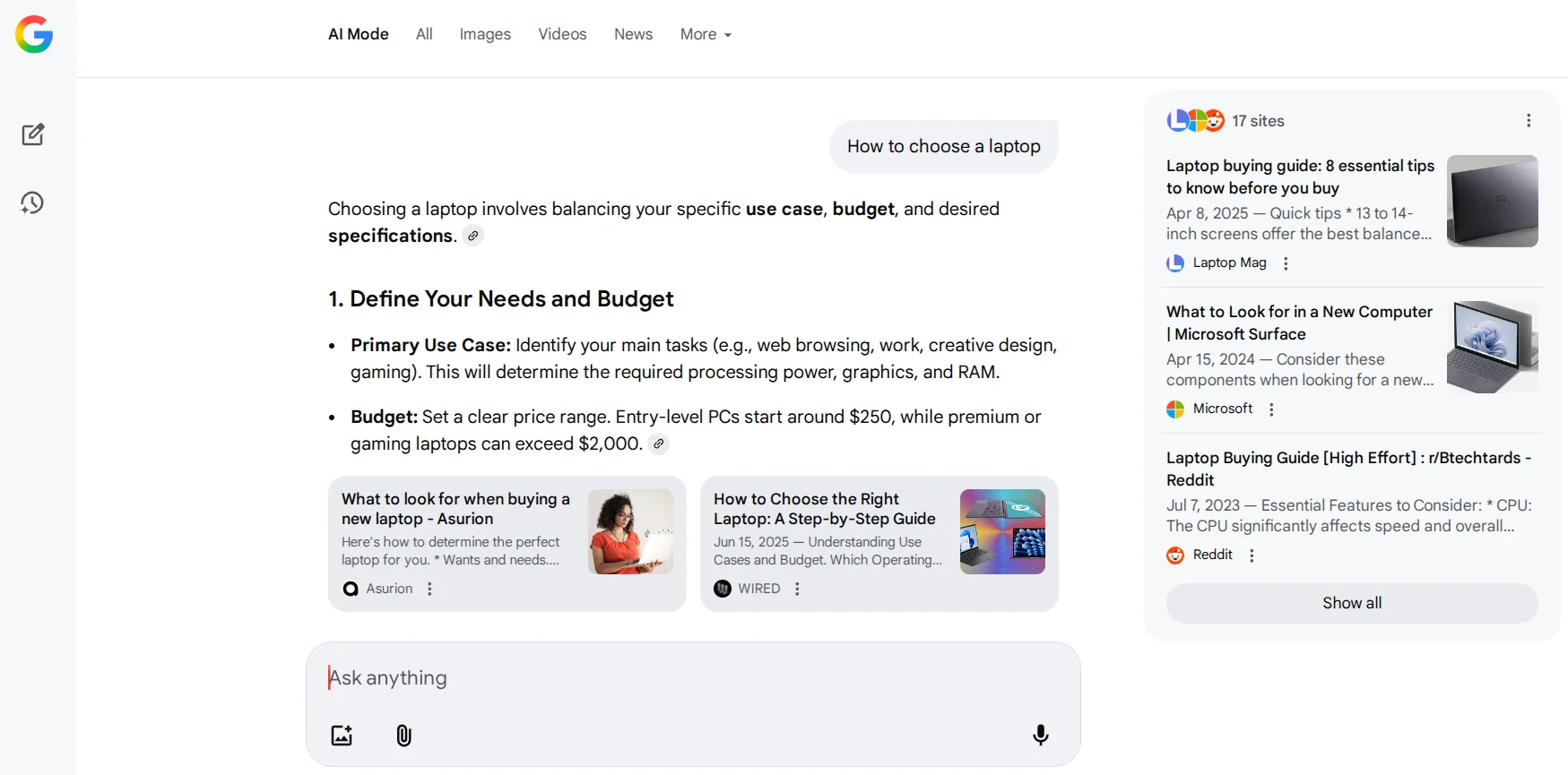
Example of AI Mode in Google.
- September–October 2025 — Technical issues + AI Mode. At the end of August, Google confirms indexing bugs. On September 11, the &num=100 parameter was removed, causing tools like Ahrefs to display inaccurate or “false” traffic drops. Meanwhile, AI Mode continues expanding, and 20–35% of websites lose visitors due to zero-click searches.

These are far from all Google updates, yet even from this timeline, we can clearly trace the emergence of the traffic drop-off. The key events began in 2022–2023 with the Helpful Content Update, and by 2024–2025, a huge number of even high-quality projects with fresh content but older pages were affected. The effect was amplified by the rapid scale-up of AI and technical issues.
Read also: What Is Website Indexing and How to Check It
Why My Website Fell into a Traffic Drop-Off
Google doesn’t penalize websites just “for fun” — it becomes stricter toward weak web projects. And today, even large and genuinely useful websites can be considered “weak” if they contain certain issues: outdated content, classic “reference-style” articles, or lack of additional value.
However, it’s also important to note Google’s share of responsibility: several serious technical incidents and indexing issues in August–October 2025 led to situations where parts of website content were temporarily excluded from search results or disappeared from the index altogether.
Now let’s move on to the possible reasons for falling into a traffic drop-off that are directly related to actions (or inaction) of website owners:
- Outdated content. After the 2022 Helpful Content Update, Google began identifying “outdated” pages as irrelevant, gradually lowering their rankings or even removing them from search results entirely.
- Search-first content. The 2022 Helpful Content Update and the 2023 E-E-A-T update caused ranking declines for articles without specific examples, images, analysis, or personal expertise. The integration of AI into search results also contributed to traffic decline, as AI now provides helpful Q&A-style responses directly in the SERP.
- Too much SEO. Even before the traffic drop-off, keyword stuffing was widely discussed — the overuse of keywords in meta tags and content, unnatural repetition, and loss of meaning due to forced insertion of target keywords.
- AI-generated content without editing. After the Spam Updates of 2023–2025, many began claiming it was strictly forbidden to use AI for writing content. Clients started demanding writers and copywriters to check materials for AI involvement. In reality, the problem isn’t AI tools themselves — it’s the mindless use of their output: templated AI content, factual inaccuracies, lack of personal experience.
- No schema markup. Google increasingly prioritizes structured data for different content types, such as FAQ (questions and answers) or VideoObject (videos on the page).
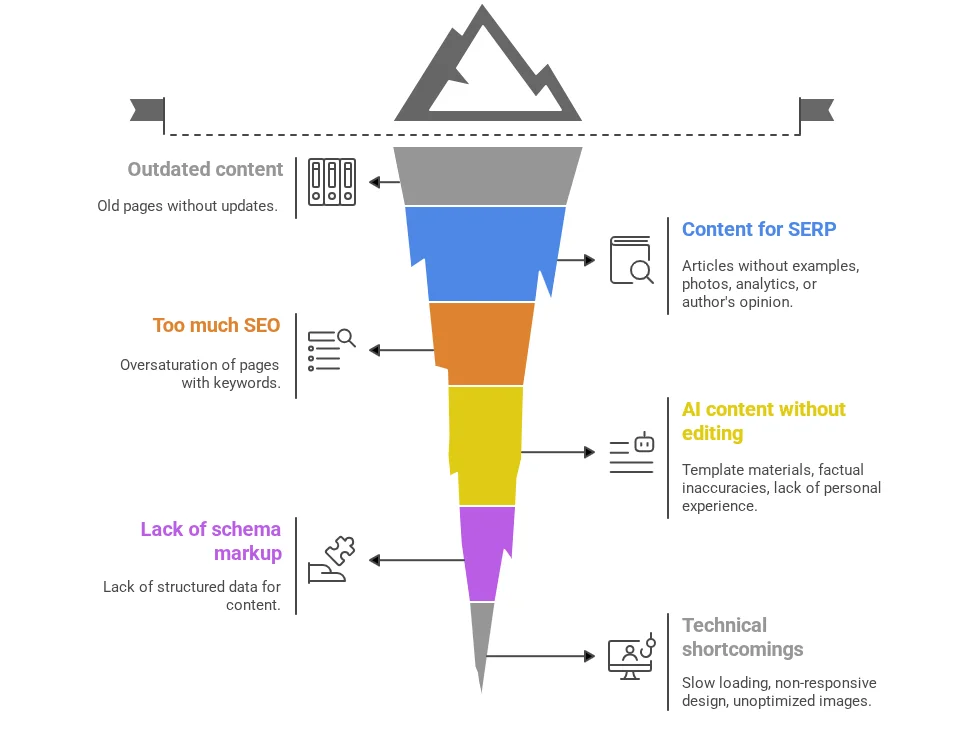
And of course, a website can fall into a traffic drop-off due to technical issues. Slow loading times (3+ seconds) caused by weak hosting, non-responsive design, unoptimized images, and complex interactive elements without caching. Ignoring mobile optimization and speed (Core Web Vitals) leads to higher bounce rates, which in turn lowers rankings. Broken links and improperly configured redirects also negatively affect both indexing and search positions.
Read also: What Is a Website SEO Audit and How to Conduct It Yourself
How to Recover from a Traffic Drop-Off: Actionable Steps to Restore Your Website
To pull a website out of a traffic slump, you need to audit the project to confirm it’s really in a traffic drop-off, refresh outdated content, publish new materials using a modern approach, and rebuild trust in your brand. This isn’t an officially approved “Google recovery guide”, but rather a list of the most effective actions based on current Google updates and changes in user behavior caused by the rise of AI.
Verify That Your Website Is Actually Experiencing a Traffic Drop
You may already be ready to “save” your website, but first you need to understand if recovery actions are even necessary. Many site owners start rewriting content even when it’s still relevant, while the drop in traffic is actually caused by false signals — like Google data center outages on October 3 and 9, 2025. In some cases, the traffic decline is simply seasonal — for example, lower traffic to student-related websites during summer breaks.
Start with Google Search Console. A 30–50% drop in impressions since August 2025 may indicate your site was impacted by the August 2025 Spam Update, or — from September onward — by the same update or a confirmed technical issue on Google’s side. If impressions remain stable, rankings stay the same, but clicks have sharply dropped, then the problem is most likely AI Overviews / AI Mode taking over clicks.

The Cityhost team also began their analysis using Google Search Console. As you can see, impressions dropped only slightly (around 10%), but clicks decreased dramatically — by 78%. This strongly suggests that AI-generated quick answers are now taking traffic away from our older FAQ-style pages.
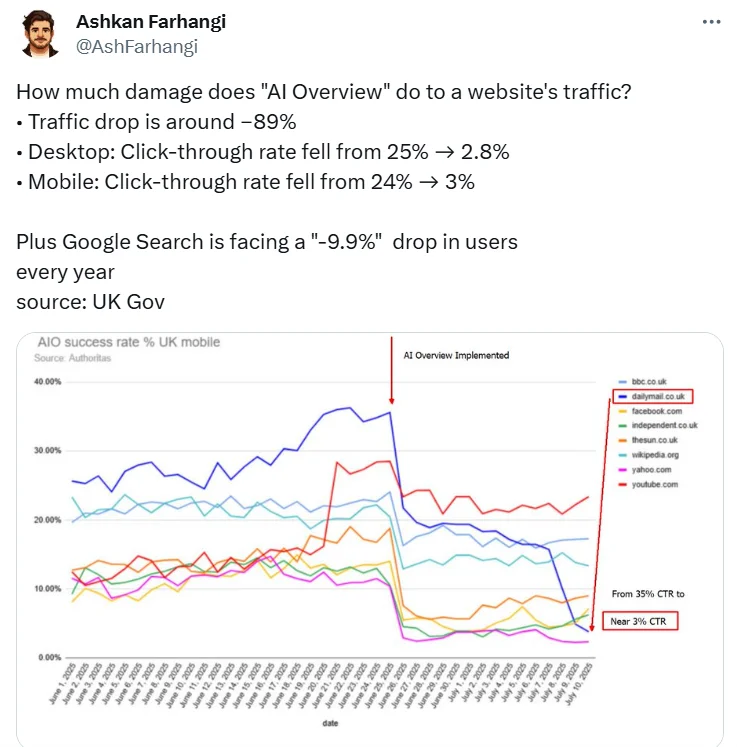
Across the web, more and more site owners report traffic loss due to AI. Even large publishers have seen click-through rates fall from 25% to 2.8% on desktop, and from 24% to 3% on mobile.
And check the technical health of the website:
- Website downtime. If Googlebot cannot consistently crawl your site and keeps receiving errors, pages start being crawled less frequently and can drop out of the index altogether. Check crawl stats in Google Search Console and website uptime via UptimeRobot, Pingdom, or GTmetrix. Make sure you’re using a reliable virtual hosting, VPS, or dedicated server with 99.9% uptime and enough resources for your project.
- Slow loading speed. We’ve talked many times about page speed, but now it’s mission-critical. If a page takes longer than 3 seconds to load, bounce rate jumps to 50–70%, and rankings decline.
- Indexing errors. New pages can be automatically generated, noindex tags may be set accidentally, canonical tags may be incorrect, etc. Go to GSC → Pages and check how many URLs are not indexed and why.
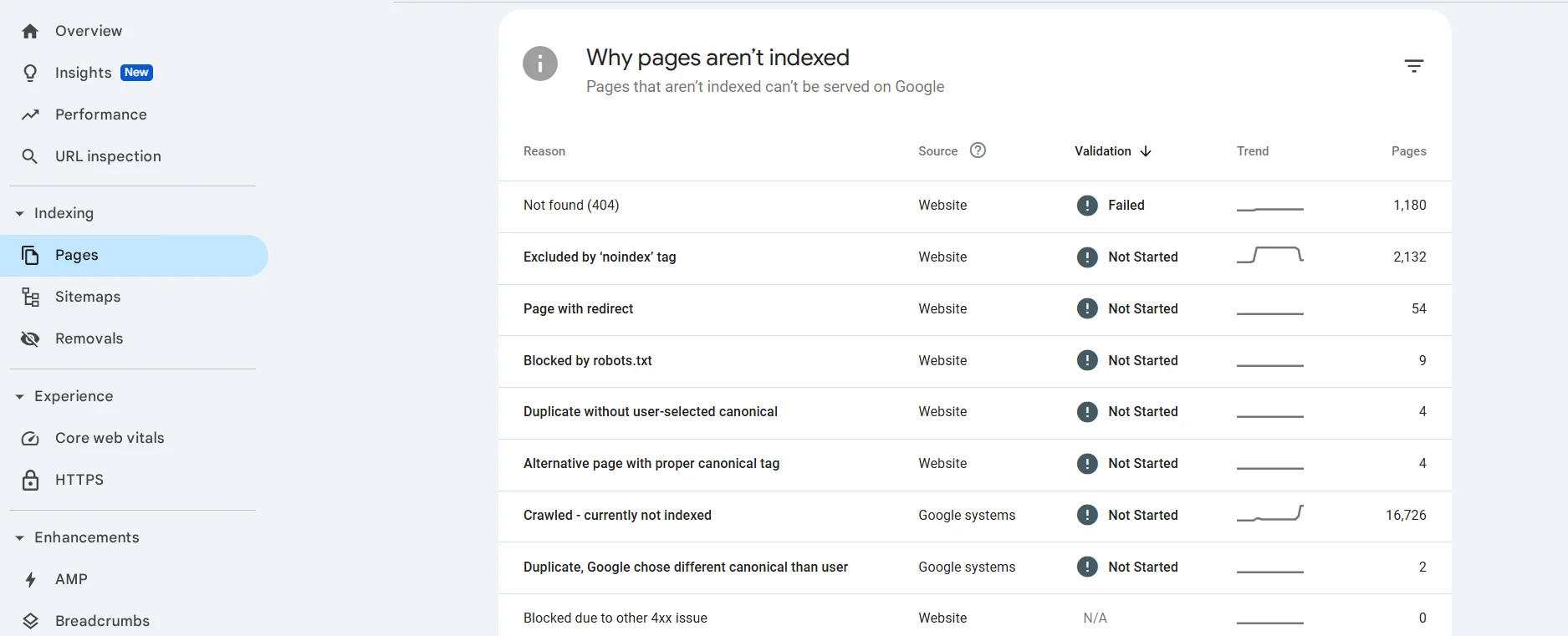
For example, on one of our test websites, the “Filter Everything” plugin was installed. We added the shortcode and forgot about it — after some time, we noticed 20 100 non-indexed pages, even though the site only had 50 real pages. The plugin had automatically generated new URLs for every filter parameter and combination. The site almost completely disappeared from search results.

After deleting the plugin and removing all junk URLs, the site started showing up in search again.
- Incorrect redirects. After redesigns, merging or deleting pages, or HTTPS migration, redirects may have broken. If Googlebot cannot access a page, it won’t be indexed. Go to GSC → Pages → Not Found (404) and set proper redirects where needed.
- Schema markup issues. Incorrect or duplicated structured data can trigger SERP errors. Since August 2024, Google began indexing embedded videos separately, so you should add a VideoObject schema. Proper structured data not only ensures correct indexing but also increases the chance that users will click your page in search results.
To understand if your site is truly in a traffic slump, analyze data from multiple tools: Google Analytics (GA4), Google Search Console, Ahrefs, Semrush, etc. Relying on a single data source can be misleading — for example, you may see a “traffic drop” in GA4, while in reality nothing has changed. The problem could be incorrect tracking setup (duplicate tracking code after site updates or broken Google Tag Manager triggers).
Shift Your Content Strategy
Regardless of whether your site is truly in a traffic drop-off or the decline was caused by technical issues, analytics glitches, or Google errors — it’s time to change your content approach.
- Reference-style articles no longer work. In the past, “How to…” and “What is…” articles could generate stable traffic for years. Their formula for success was simple: target keyword + complete answer + H2/H3 structure. But starting in 2023–2024, this traffic was taken over by AI Overviews, and from 2024–2025 — by AI Mode.
That’s why it’s time to move from generic informational content to results-based content. Not “What is a Title Tag”, but “Title Tag rules that helped us increase CTR by X%”. The growing popularity of forums proves this model works — while traditional websites fall into traffic drop-offs, Reddit continues to grow in both traffic and revenue.

In Q1 2025, Reddit attracted 108.1 million weekly users, which is 31% more than the previous year. The platform’s revenue reached $192.4 million, up 61% compared to 2024.
- Proof Is Required. For years, list-style articles like “Top 10 VPN Services” or “7 Best Productivity Tools” were a goldmine for SEO and affiliate income. Most of them were never tested — just affiliate-driven content ranked due to domain authority and backlinks.
After Google’s Product Review Updates and Helpful Content Update, Google now demands real experience and evidence. Many affiliate websites lost 60–90% of their traffic. These articles can still perform — but only if they include actual test results, screenshots, comparison tables, and original opinions. Again, the most valuable format is results-based content, e.g.: “I tested 5 CMS platforms — only one allowed me to build an interactive entertainment website”.
- Quality Over Quantity. Until 2023, the strategy “the more pages — the better” worked perfectly. Some site owners published 30–50 articles a month — mostly templated, with no research, no testing, no opinion, minimal media.
But after the Helpful Content and Core Updates of 2023–2024, Google began evaluating websites as a whole, not page by page. Large content farms (especially those powered by AI tools) lost traffic even if they had a few good pages. This is when SEOs started saying: “Even 10% low-quality content can drag the entire site down”.
- Text Alone Is No Longer Enough. Previously, long-form articles (15000–30000 characters / 1500–3000 words), fully optimized for keywords and meta tags, were a winning SEO formula. Many of those pages ranked high even without images, graphics, or interactivity.
But after Helpful Content Update and Core Updates of 2024 and 2025, Google became better at detecting whether the author has real experience and whether the content is genuinely created for people. One of the strongest proof signals now is multimedia: real screenshots from tools you’ve tested, original infographics, videos (properly marked with VideoObject schema). Custom visuals instead of stock images, text still matters — but now media-rich content with expertise matters more.
Content that performs today is written by a credible author, based on deep research and personal experience, presented not only in text, but also via media formats (screenshots, graphs, videos), unique, opinionated, and discussion-worthy. Users no longer need dozens of identical “what is” or “how to” guides — AI already provides generic answers. What they lack now are platforms with real authors, experience-driven content, personality, and the ability to interact or discuss topics.
Update Old Pages Using a New Approach
We’ve already discussed shifting from outdated content strategies to new ones, major Google algorithm updates, the emergence of AI Overviews and AI Mode, and how this has created a situation where old content can trigger a traffic drop-off — even on websites with a long history and strong backlink profiles. Most of this content remains in a reference-style format, is over-optimized with keywords, doesn’t meet current E-E-A-T standards, and provides little to no value.
To recover faster from a traffic drop-off and increase your website’s performance, focus on these key content update principles:
- Content Format. Move away from dry explanations that AI can easily generate and shift toward personal experience and client stories. Replace formats like “what is…” or “how to…” with “how we / our clients did it”. You can still provide explanations, but limit them to 1-2 paragraphs (FAQ with proper markup), and build the rest of the article around research, personal case studies, and/or client examples. This is exactly the kind of format AI still can’t replicate authentically.
- Data Updates. Don’t just change the date (from “Best VPS Servers 2024” to “Best VPS Servers 2025”). Completely replace outdated information with current data. In this case, update pricing, functionality, and even replace some companies with new ones if necessary.
- Add Media. Instead of generic stock photos, use product images, service screenshots, and infographics. If you're adding videos, make sure to include proper VideoObject schema.
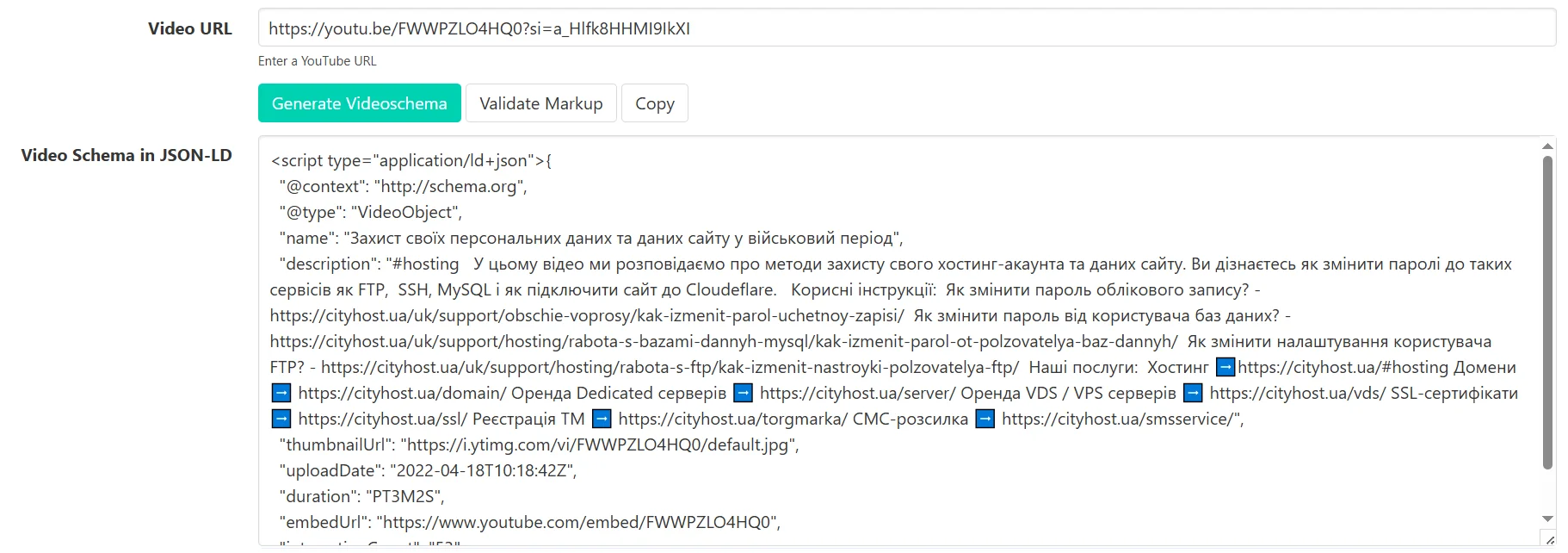
The screenshot shows an example of a VideoObject Schema for our YouTube video about personal data and website data protection, generated with videoschema.com in JSON-LD format. The code should be embedded in the page’s HTML.
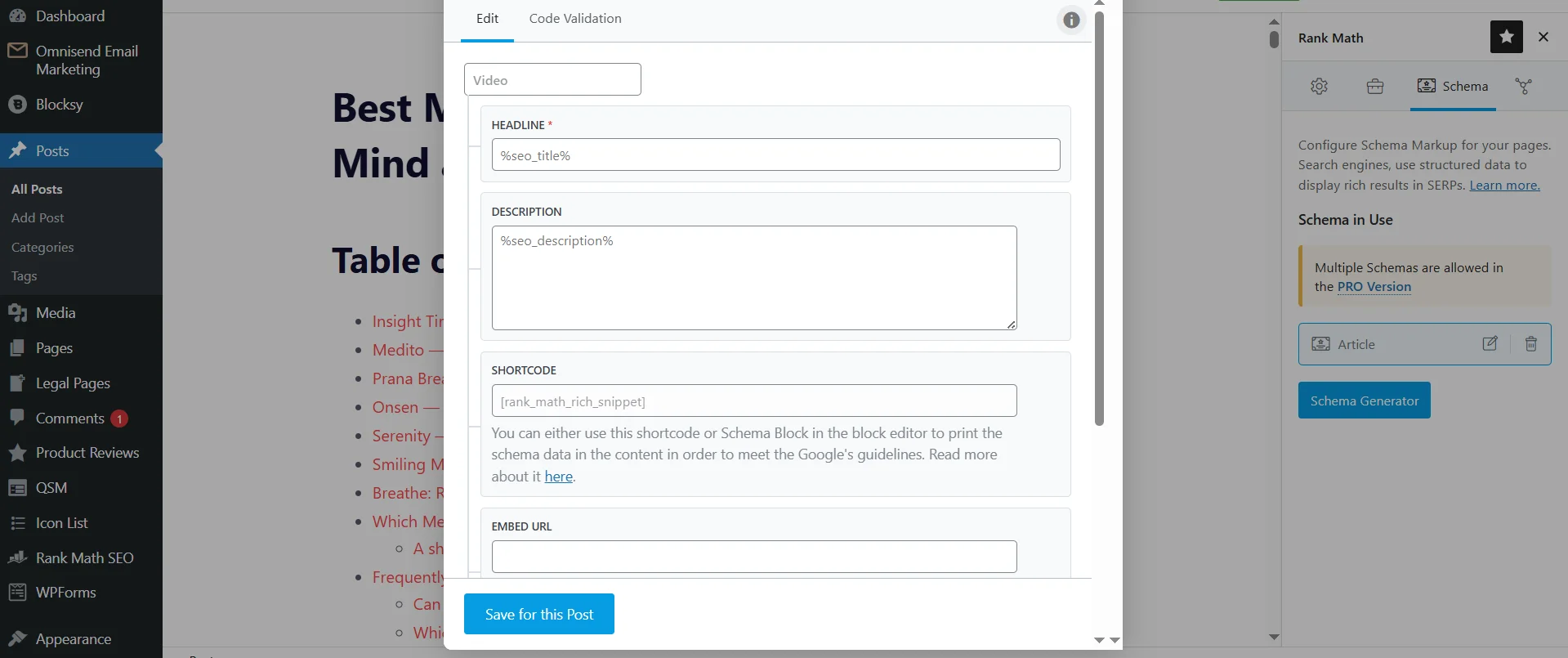
Alternatively, you can use paid versions of Rank Math or Yoast plugins (free versions allow only one type of schema).
- Add Interactivity. If you can provide additional value through surveys, quizzes, calculators, or other interactive elements, make sure to use them. They help users, increase average time on page, and decrease bounce rate — and you don’t need world-class developers to implement them.
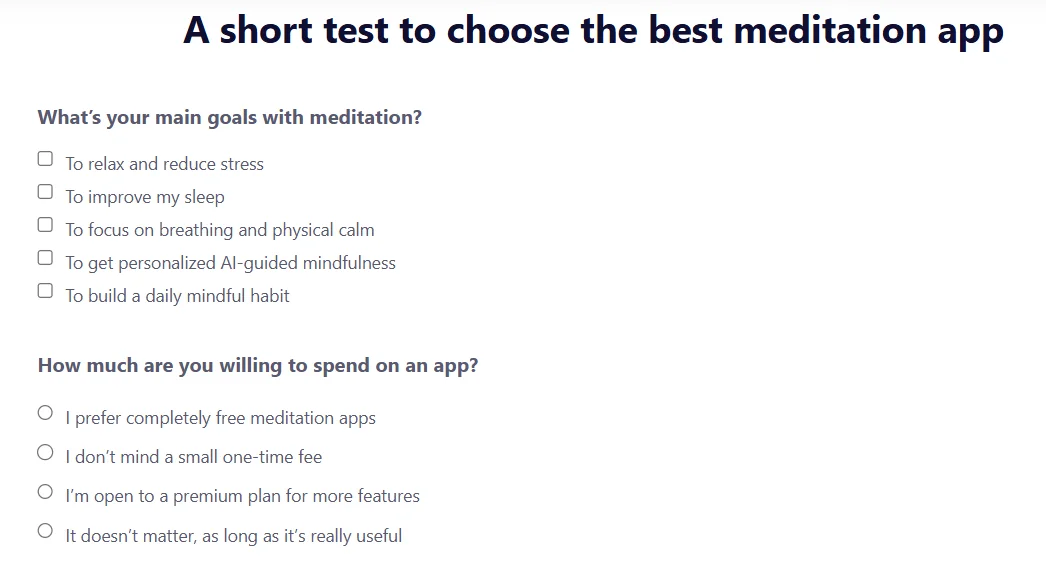
For example, a short quiz to determine the best meditation app directly within the article. It was built using the free WordPress plugin Quiz And Survey Master.
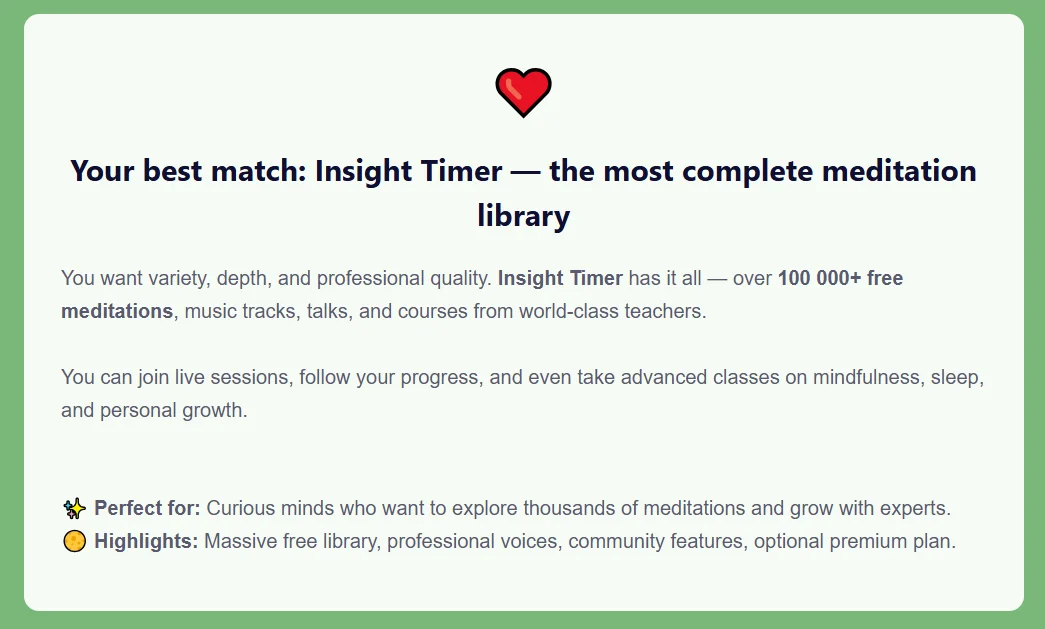
Results are displayed instantly within the same article, without generating additional pages. They are fully customizable, so you can add links to other articles, products, services, etc.
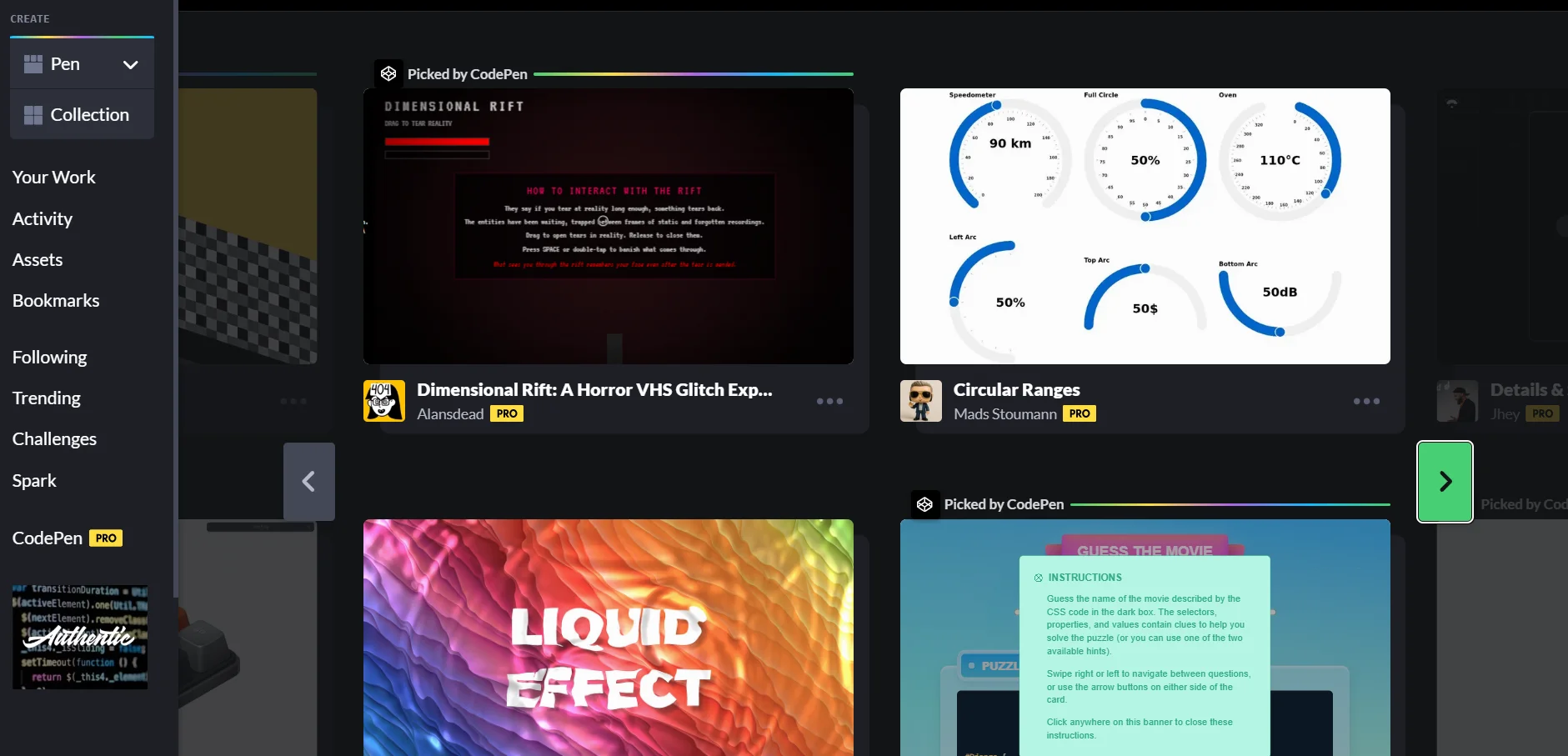
Various interactive elements can be found on platforms like CodePen and embedded into your site via the Embed option (</>) or by copying and pasting the code into the desired section.
- Don’t Forget About Expertise. Previously, the author block was optional, but now it plays a crucial role. Don’t be afraid to cite sources and link to studies — you demonstrate that you’ve researched the topic and increase trust in your site.
Example for Better Understanding. Let’s take an online air conditioner store as an example. Previously, the page might have featured a classic SEO text like “What are inverter air conditioners”, with a dry definition, how they work, and generic buying tips. Turn this into a valuable guide with client stories, such as: “How inverter air conditioners helped our clients reduce energy consumption by 70%”.
In the article itself, provide a short definition (“Inverter air conditioners are…”), embed a video with schema markup, include client stories with real results, energy consumption statistics, an FAQ section of 5-7 questions, an electricity consumption calculator for split systems with inverter compressors, and other similar elements. This type of content doesn’t compete with AI answers — it offers human experience, which algorithms can’t replicate.
The same tactics — content format, updated data, media and interactivity, expertise — should be applied when creating new pages as well.
Build Trust Beyond Your Website
Building trust has always been an essential part of successful website growth. However, while in the past it was often enough to buy backlinks from reputable websites, today this process requires a more strategic and careful approach. Both Google and AI platforms now critically evaluate authority. If no one cites you, mentions your brand, or searches for you by name, even the best article can lose visibility.
First, refine your unique value proposition, visual identity (logo, consistent color palette, content style), and Tone of Voice (communication style with your audience). Once this foundation is in place, expand your presence beyond your website:
- Social Media. Platforms like Instagram, Twitter, TikTok, Pinterest, and Telegram help you reach new target audiences, demonstrate expertise, and increase brand awareness.
- YouTube. As the second-largest search engine, a YouTube channel builds authority and showcases expertise through practical demonstrations. Videos also appear in search results and generate additional traffic. You can embed these videos into your website pages, increasing on-page time.
- Forums. Promoting content on forums — like Reddit — can be challenging. Experts recommend spending the first few weeks actively replying to comments without adding links, then creating your own discussions. Only after 1-2 months, when you've gained 500+ karma, can you begin adding links carefully to avoid being banned. However, these efforts often pay off with hundreds or thousands of visitors to your site, especially if a discussion goes viral.
- Content Platforms. Publish adapted versions of your articles or unique content on platforms such as Medium, Dev.to, and others. This increases reach, builds backlinks to your main website, and reinforces authority through association with established media sources.
- Guest Posts. Writing articles for reputable websites in your niche brings high-quality backlinks and enhances brand recognition.
- Email Marketing. This helps you build your own audience — independent of Google algorithms, social media, or content platforms. To grow your email list, use lead magnets (free eBooks, checklists, templates, courses), pop-up forms (one after 30–60 seconds on the site is enough), or bonus materials in exchange for an email address.
The more high-quality visibility you create, the higher your chances of attracting your target audience — regardless of the rise of AI or changing Google algorithms. But the key word here is quality. Choose only those methods and in such volume that allow you to consistently meet the needs of your specific audience. It’s better to post content daily on one social media platform, publish weekly on one content platform, and send 1-2 email newsletters per week, than to try everything at once and abandon it.
What Happens to Websites After a Traffic Drop-Off
We’ve prepared well — analyzed the timeline of changes, expert opinions, and official Google statements — and tried to deliver the most useful information possible. But did you get the feeling while reading the article that many of the ways to recover a website from a traffic drop-off are things you’ve already seen before? That’s because for years, experts have been talking about the importance of having no technical errors, fast page load speed, writing truly unique, interesting, and useful content, adding media and interactive elements, and finding ways to get brand mentions online — but most people ignored it.
Even after the emergence of various AI services, we didn’t focus on creating content that stands apart from them. Instead, we began using AI for mass content generation — and then wondered why websites fall under search engine filters, visibility drops, and traffic declines.
So what has actually changed? Artificial intelligence has fundamentally changed user intent. The number of queries that can be fully answered within AI Overview keeps growing, which means users don’t need to visit websites anymore. Right now, nearly 60% of search queries end without a single click, and this number will only increase. As a result, traditional organic traffic will continue to fall. On top of that, AI-powered mobile apps are also growing rapidly. OpenAI CEO Sam Altman said that 800 million people used ChatGPT weekly at the beginning of October 2025, and the number of such assistants and niche AI applications continues to rise.
Can Websites Recover from a Traffic Drop-Off? Yes — and there are already platforms that have partially or fully restored their website traffic. But these are brand-driven websites that have recognizable names, active social media profiles and YouTube channels, build email lists and get direct visits, create original research and case studies, publish deep, unique content that AI cannot replicate, and provide practical insights from real experience. At the same time, they don’t reject AI — they adapt content for it: use structured data, provide explanations in FAQ format, focus on firsthand experience, visuals, and interactive elements.
If you also want to recover and grow website traffic — take these steps:
- fix technical issues;
- rewrite old articles with a focus on personal or client case studies;
- use interactive features that provide additional value to users;
- optimize pages for AI by including FAQs, VideoObject, and other structured data;
- grow beyond your website and build a brand — on platforms like Medium, Reddit, YouTube, TikTok, Pinterest;
- build a community, like classic blogs once did — where people saved posts, awaited new content, and left comments.
So, is there light at the end of the tunnel? Yes — but the road to it requires fundamental changes and moving away from the classic SEO that worked for years. Success is no longer measured by search rankings or traffic volume. Success is being the source others cite, the brand people trust, the expert they turn to. All Google algorithm updates and the rise of AI are leading to one thing: only projects that provide real value to users will remain.









